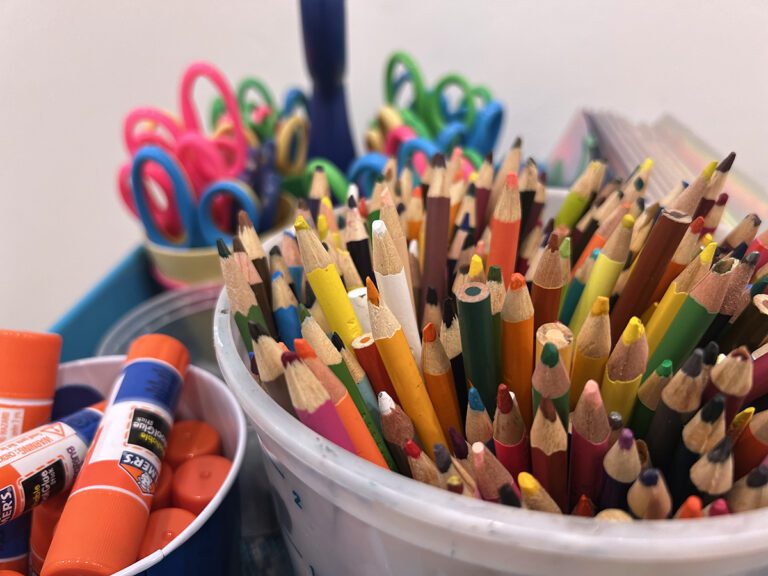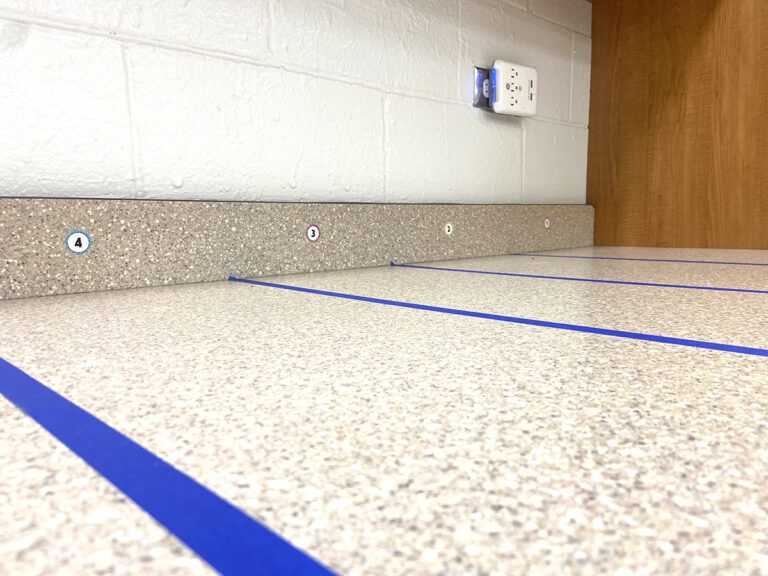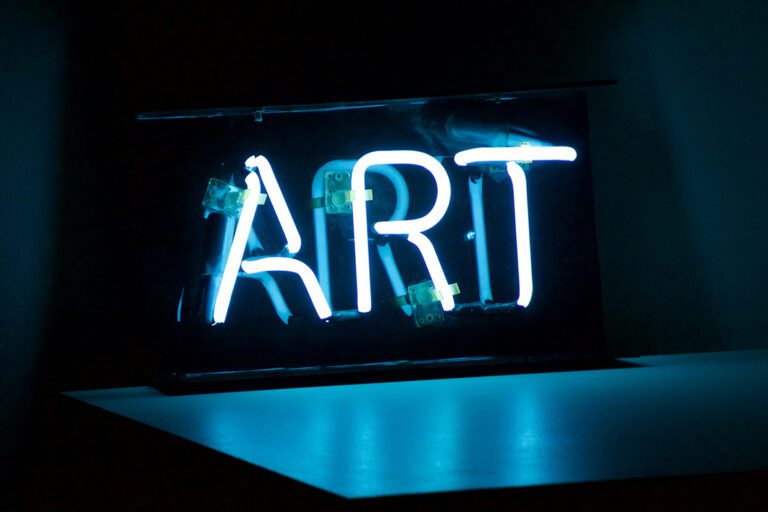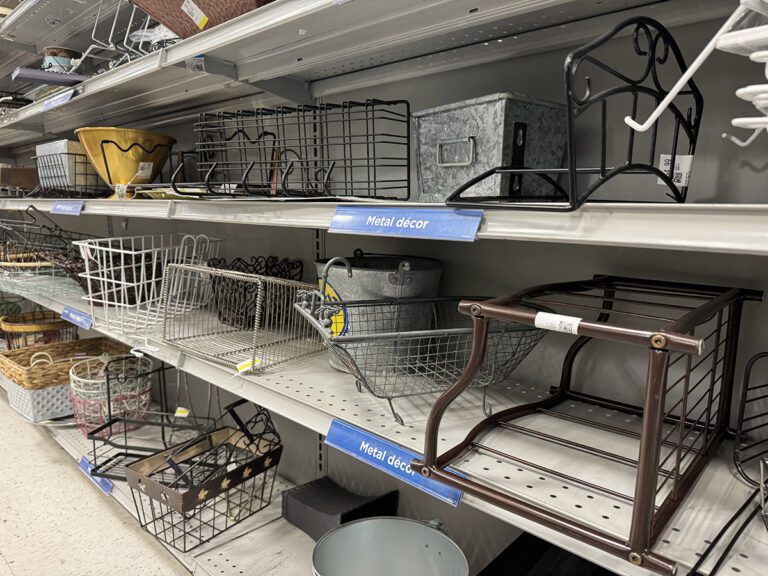Games are a classic student motivator, so what could be better than a classroom management game? How about one that is pretty much built for you!?
Enter: Best Behavior Bingo.
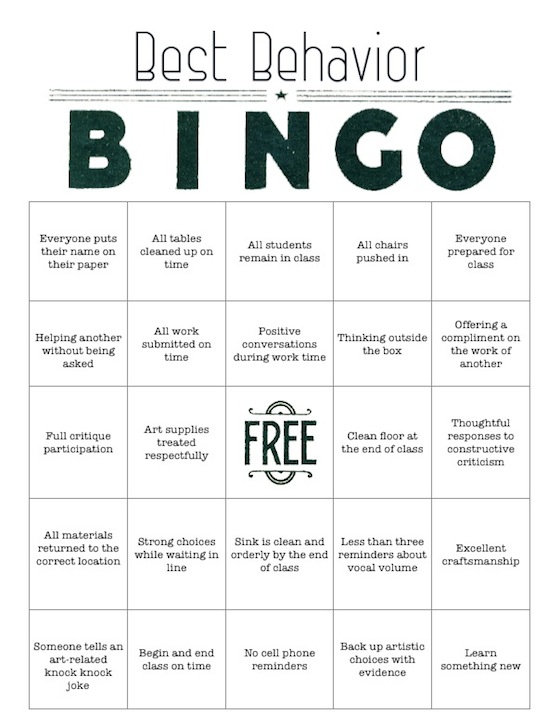
The idea is simple and easy to implement. Each class gets a bingo-style card posted in the art room. Just like a classic bingo card, the letters at the top spell BINGO. Instead of numbers, the squares are filled with behavior goals.
Here is how I run the game…
It’s a carrot. I dangle it up until the very end of class as a way to keep kids focused. Carrots are not guaranteed! If we have a particularly rough class, we don’t mark a square. Classes who are on point may get to mark two squares.
I use real bingo markers and let a student with “BINGO Behavior” mark the square, usually after we have lined up to leave the classroom. (Sometimes it works as a positive reinforcer to encourage continuing good behavior in the middle of the period.) The markers are cheap, and you can color code your classes.
Once a class has earned a row or column of five BINGO Behaviors, they get to vote on a pre-determined experiential reward (modeling clay day, sidewalk chalk, art centers, lunch with me, etc.).
The best thing about the game is the cards can be the same because the classes aren’t necessarily competing with each other. If you want to get fancy you could create a unique card for each class and have them compete for the experiential rewards. Post the rewards with the BINGO cards and once a class wins one, indicate that it is no longer available by crossing it off. This adds another layer of motivation. Cards can last for quite awhile: once the row is complete move on to blackout!
You can download a PDF version of our Best Behavior BINGO card by clicking here. If you’d like a customizable version, please click here!
How do you make following the rules fun in your room?
Would you consider using this in your classroom? Why or why not?
Magazine articles and podcasts are opinions of professional education contributors and do not necessarily represent the position of the Art of Education University (AOEU) or its academic offerings. Contributors use terms in the way they are most often talked about in the scope of their educational experiences.

